Your daily dose of Product Management Goodness
Want to know more?
We would love to hear your questions and suggestions for topics you would like to see covered in our future blog posts, so don't be shy and get in touch!


Dealing with Obstacles
Dealing with obstacles
Navigating obstacles is a daily part of Product Management – dealing with product issues, pressures from other teams, workload, worrying about product performance…..
Some Product Managers become so overwhelmed that they can’t see anything but obstacles. Their performance suffers, their product suffers,
they suffer! Here’s a tip from the world of cycling; instead of looking at the obstacles, look beyond them at where you want to go. Look through the trees and around the rocks. By focusing on where you want to go instead of what you want to miss, the obstacles shrink and that good path becomes clear.
read more
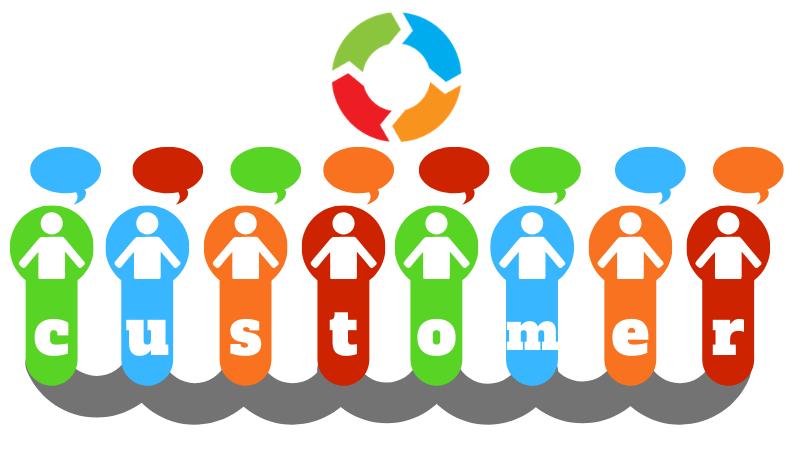
Value your Customers
So many organisations look at their existing customers as ‘A deal that is already done’.
Why is it that they so rarely ask how are these happy customers going to help them sell to the next group of customers?
When launching a new product, having a group of strong advocates will kick start those sales far quicker than sending out flyers or other marketing materials.
Think about what you need to do with getting the innovators on board and talking about your solution.
Don’t take your customers for granted. They could be your greatest advocate or your biggest critic. And they can either damage or improve your solution growth, depending on how you treat them.
read more

Roadmap to Recovery
Here in the UK our PM has published his “roadmap to recovery”. i.e. how we exit lockdown and get back to a normal life. As any Product team knows, roadmaps are difficult to get right – committing enough to gain interest/excitement/support/confidence whilst not making promises that you can’t keep is a difficult balance. So how has Boris done? He’s committed to a set of major ‘from’ dates and given high-level expectations around each of these dates. Essentially he’s got some room for maneuver if the situation changes. The two worst things he could have done would have been 1. Said nothing. 2. Committed too much. I’d say that from a road mapping perspective he’s got this about right.
read more
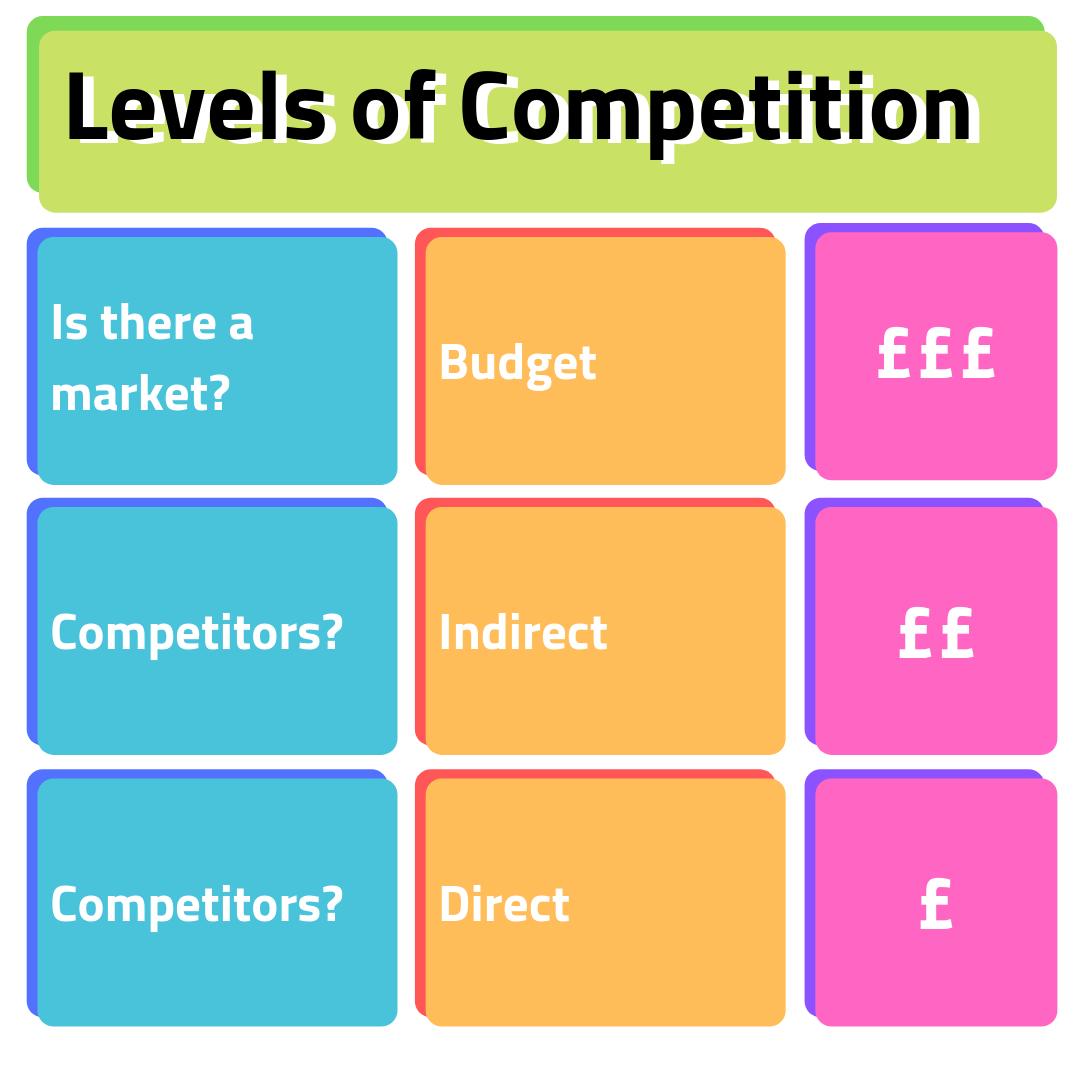
Competition
We should think about levels of competition.
1. We might face products similar to ours from competitors that look a lot like us. These are direct competitive threats - think Audi vs BMW vs Mercedes.
2. Sometimes the competition is less obvious. Its other ways that our customers can solve the problem that we help them solve. These are indirect competitive threats – think car vs plane vs video conferencing
3. Occasionally we see our product having no competition. This sounds great, but we should be cautious. No competition might mean you’re first to market, but it might also mean that there really is no market. Even being first to market isn’t without risk. History is littered with examples of products and businesses that got there first, but didn’t thrive – think Palm in the PDA market, the Beta max format in the video market or Atari in the games console market. All three were first to market. All three failed to capitalise on first mover advantage
read more

Market Research Quick Tip
Market research can give you the wrong answers if you don’t ask the questions in the right way. “Which is your favourite colour car” is a very different question to “Which colour car would you buy”. They make like the yellow car, but buy the blue one because of resale value concerns.
read more
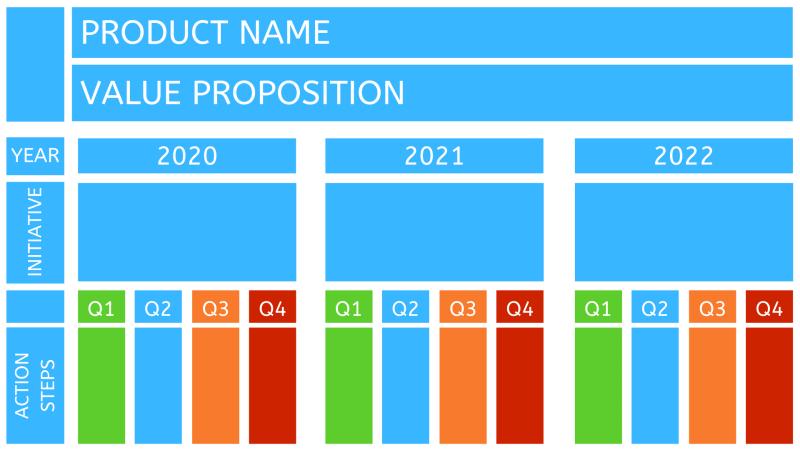
Building out a vision
Building out a vision is tough. Working out how to deliver is even tougher! We’ve built a one page canvas that helps:-
1. Define your three year goals for your product
2. Think of annual initiatives or themes for years 1, 2 and 3 that drive to that goal
3. Break the annual initiative down into quarterly points of value
It breaks a big problem down into smaller, bite sized steps.
How are you currently dealing with planning your product's future?
Let us know what you think might be useful in the comments
read more
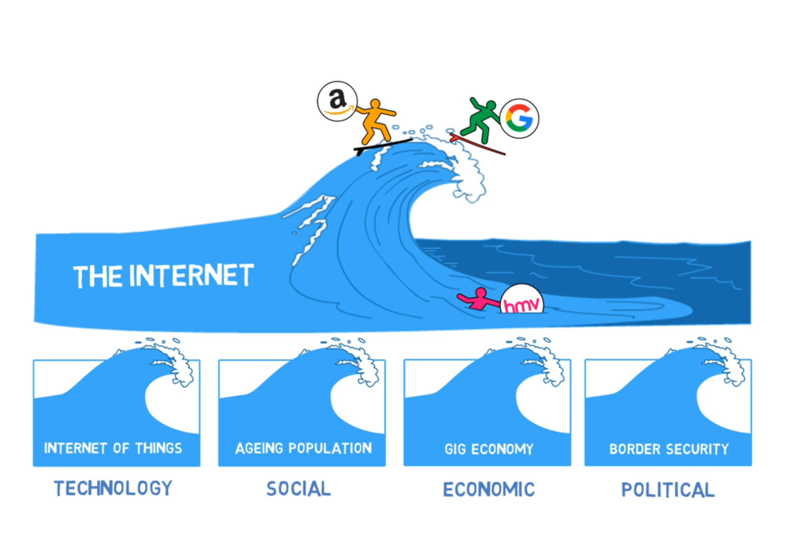
Mega Trends
Mega trends are substantial changes that can impact any aspect of our business. Once upon a time the internet was a potential mega trend, out on the horizon, gathering strength. Some businesses saw it, built or modified their products to accommodate it, and rode the internet wave. Others weren’t so visionary and floundered as the world moved online.
How do we identify mega trends? product managers must constantly look for trends in four broad categories:
· Technology – today we see trends such as A.I or the Internet of Things gathering momentum.
· Social – think of trends such as the ageing population or urbanization
· Economic – the gig economy and peer-to-peer networks are relevant examples
· Political – trends could be border security or environmental controls.
Once we’ve identified the trends, we need to think of what they mean to our business. For example, IoT presents risk and opportunity around cybersecurity. There will be an estimated 26 billion connected devices by 2020 – some sharing sensitive data and payment information. Hacking into that network could cause widespread disruption.
So what mega trends present opportunity or risk to your product? Product Managers should be thinking about this regularly.
read more

Mega Trends
Mega trends are substantial changes that can impact any aspect of our business. Once upon a time the internet was a potential mega trend, out on the horizon, gathering strength. Some businesses saw it, built or modified their products to accommodate it, and rode the internet wave. Others weren’t so visionary and floundered as the world moved online.
How do we identify mega trends? product managers must constantly look for trends in four broad categories:
· Technology – today we see trends such as A.I or the Internet of Things gathering momentum.
· Social – think of trends such as the ageing population or urbanization
· Economic – the gig economy and peer-to-peer networks are relevant examples
· Political – trends could be border security or environmental controls.
Once we’ve identified the trends, we need to think of what they mean to our business. For example, IoT presents risk and opportunity around cybersecurity. There will be an estimated 26 billion connected devices by 2020 – some sharing sensitive data and payment information. Hacking into that network could cause widespread disruption.
So what mega trends present opportunity or risk to your product? Product Managers should be thinking about this regularly.
read more

Mega Trends
Mega trends are substantial changes that can impact any aspect of our business. Once upon a time the internet was a potential mega trend, out on the horizon, gathering strength. Some businesses saw it, built or modified their products to accommodate it, and rode the internet wave. Others weren’t so visionary and floundered as the world moved online.
How do we identify mega trends? product managers must constantly look for trends in four broad categories:
· Technology – today we see trends such as A.I or the Internet of Things gathering momentum.
· Social – think of trends such as the ageing population or urbanization
· Economic – the gig economy and peer-to-peer networks are relevant examples
· Political – trends could be border security or environmental controls.
Once we’ve identified the trends, we need to think of what they mean to our business. For example, IoT presents risk and opportunity around cybersecurity. There will be an estimated 26 billion connected devices by 2020 – some sharing sensitive data and payment information. Hacking into that network could cause widespread disruption.
So what mega trends present opportunity or risk to your product? Product Managers should be thinking about this regularly.
read more

The Value Delivery Network
The value delivery network
When we think about the value our products deliver, we often think about the value we deliver to one group; the end users. But it is rare for value delivery to be that simple. For most products, value delivery is best perceived as a network of value creators and value recipients. We might create elements of value by what we build, how we support, or how we price. That value is delivered to those who buy, support, and use our product. Not one single entity either creates or receives all of the value. Forget this and there will be an imbalance in value creation.
read more

The Impact of getting a product
The impact of getting a product wrong
You can get a product wrong in many ways - badly designed, poorly build, doesn’t solve any specific need, too expensive etc....
We often think of the cost of the mistake in relation to the product - x million in development effort has been wasted, but the cost is much bigger than that. Think of it from a brand perspective. If a company delivers a bad product then customers don’t just reject the product, but they become wary of brand. An example from two brands- Alfa Romeo and Porsche; Alfa have a history of highs and lows. Sometimes they delight, sometimes not. Porsche have consistency. Now imagine both companies announce a new sports car for 2019 that you can place a deposit on today. Guess who would have the fuller order book? Brand confidence is a war that products battle to win
read more
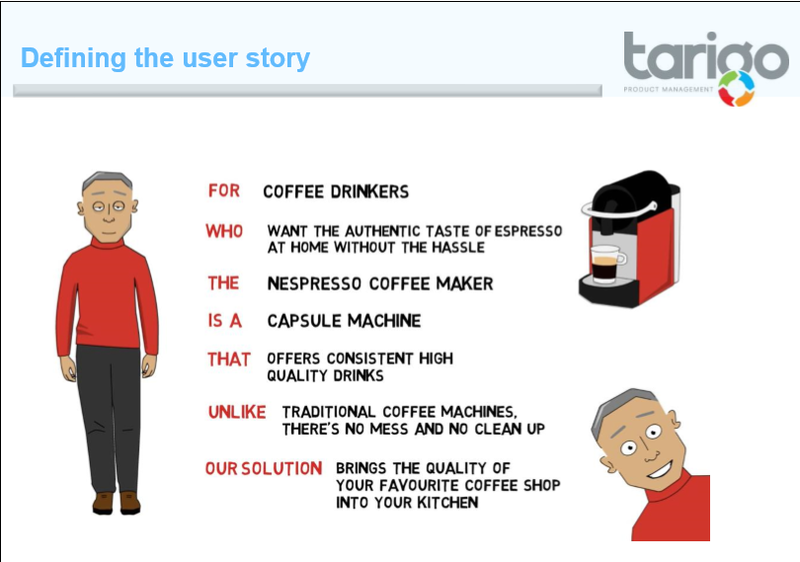
What's your product Value?
What’s your product value?
Product managers should be able to articulate the value of their product to the target market in a concise, coherent and compelling way. Here’s the value proposition template with Nespresso as an example. Simply replace the black words with your own to build your value statement.
read more
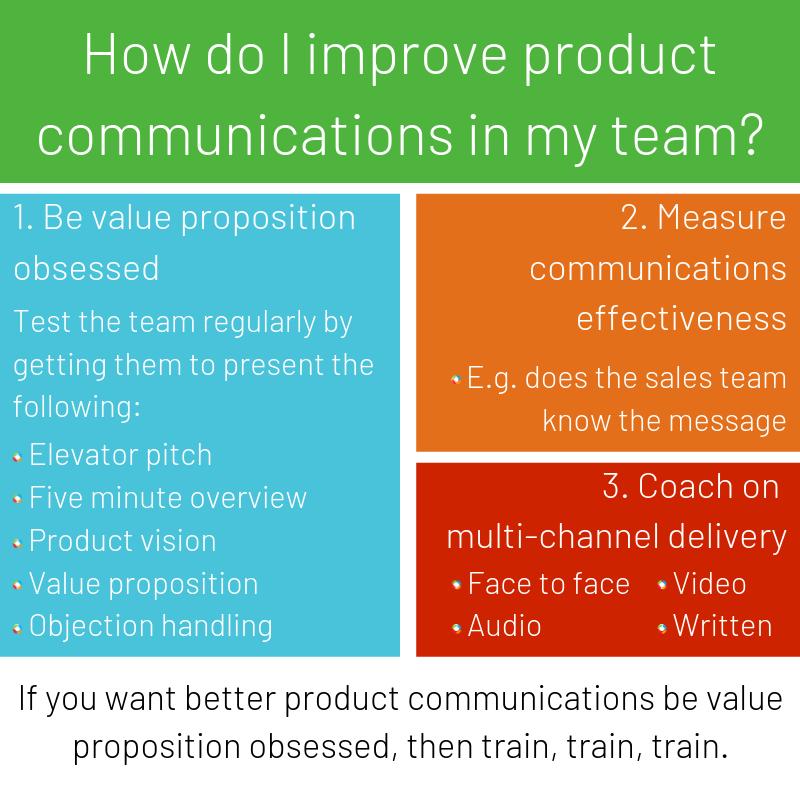
Better Product Communicators
Leaders of Product Management often ask how to get their team to be better product communicators - to be able to get their message across well. My response is to ask one simple question “When did you last ask the team about value propositions?”. Here are some simple tips to drive better product communications:
1. Be value proposition obsessed
Test the team regularly by getting them to present the following:
• Elevator pitch
• Five minute overview
• Product vision
• Value proposition
• Objection handling
2. Measure communications effectiveness
• E.g. does the sales team know the message
3. Coach on multi-channel delivery
• Face to face
• Audio
• Video
• Written
read more
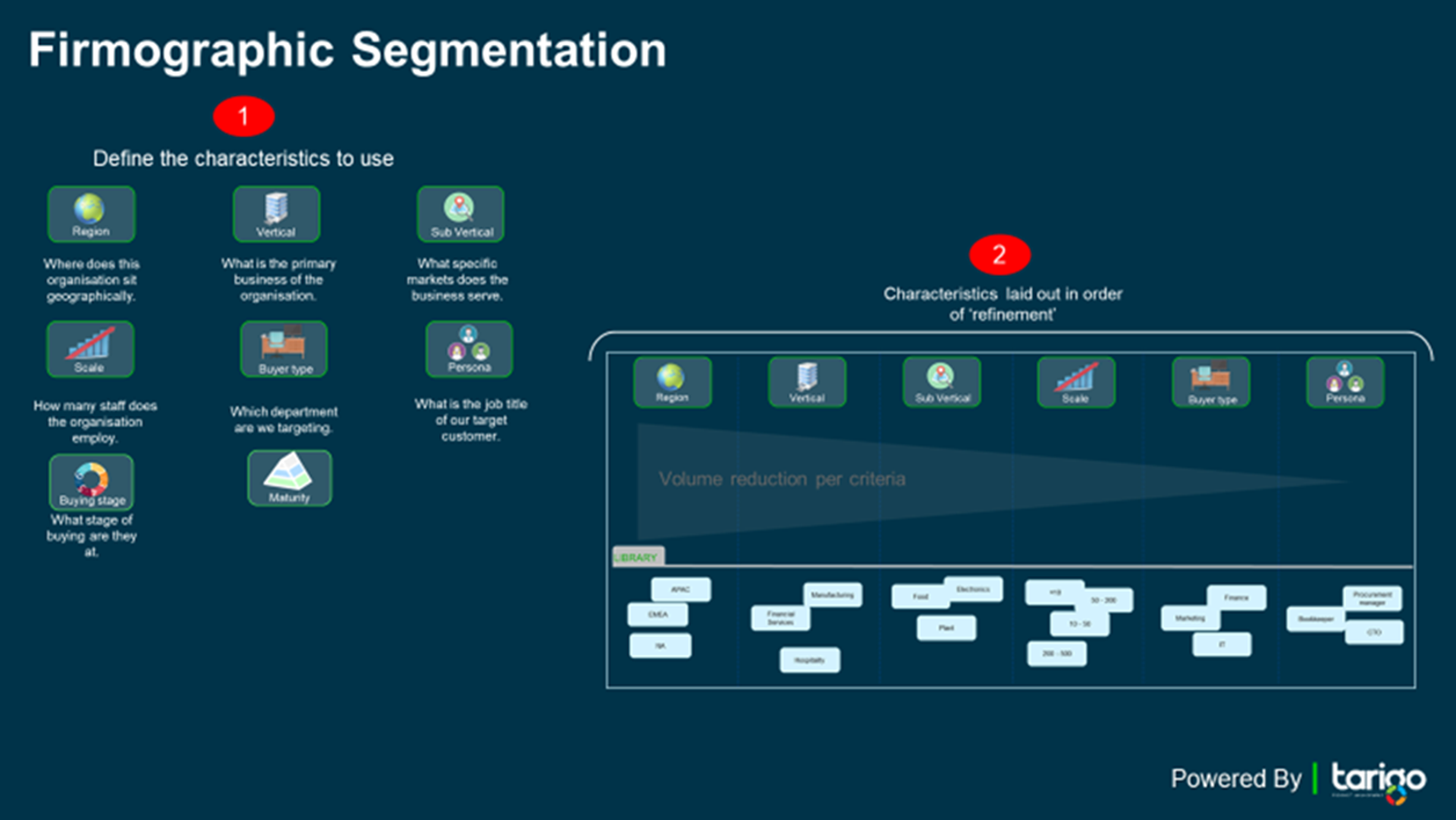
Firmographic Segmentation
This is a neat segmentation technique. Firmographic segmentation is the process of analysing B2B audiences and grouping them based on their shared characteristics.
Firmographic data is gathered and analyzed in order to better understand and isolate the target audience
Businesses use firmographics for organisations in the same way that B2C companies use demographics for people
read more

Maintenance vs Innovation
Maintenance vs innovation
How do product managers balance the needs of their current product versus investing in new ideas? We’re working with a company where about 80% of development effort is directed towards product maintenance, some towards enhancements and the little bit that’s left goes to innovation. The result? A very frustrated senior management team who see a huge spend and nothing new to sell. There can be many reasons behind this (badly architected product, fixed sized dev teams, etc) but it clearly can't be sustained. Our fix? Set a target maintenance spend (say 20%) and a target date to hit that spend (say 3 years), and then ratchet spend down each quarter. This gives teams the time to address the fundamentals, get a plan in place and move towards a more appropriate spending level.
read more
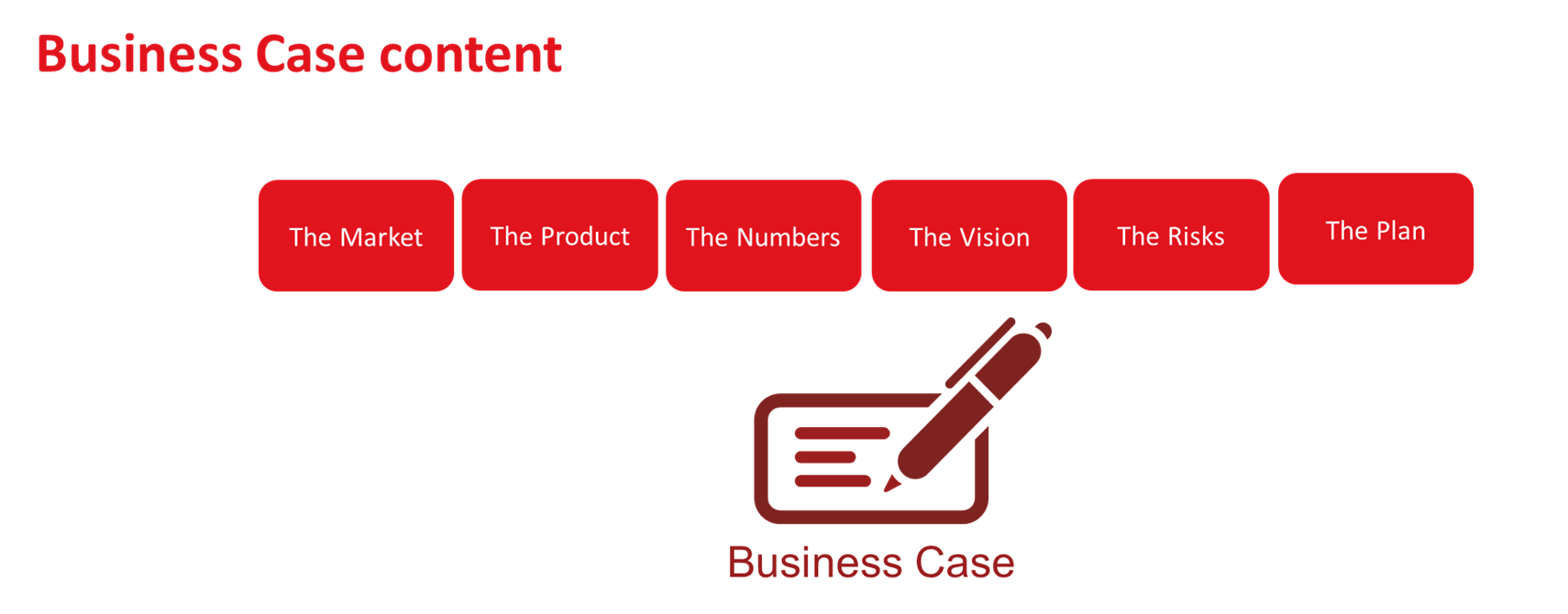
Your business case
Keeping your business case up to date
Product managers understand the need for a business case when they are looking for investment in a new product. It tells stakeholders about customers, markets, competition, and the solution needed to capture those markets. But what about post launch - should the business case be filed and forgotten? The short answer is no – the business case needs to reflect current market conditions to enable good decisions throughout the product lifecycle . Here’s our tip on making this happen; When you launch your product, file a copy of the business case. But also take a second copy and spend a few minutes at the end of each week updating it with new insights “What have I learnt about my business over the last few days”. Every three months file the updated copy and continue with the process. The net result? A business case that describes why you went to market and a set of incremental updates that describe current market conditions.
read more
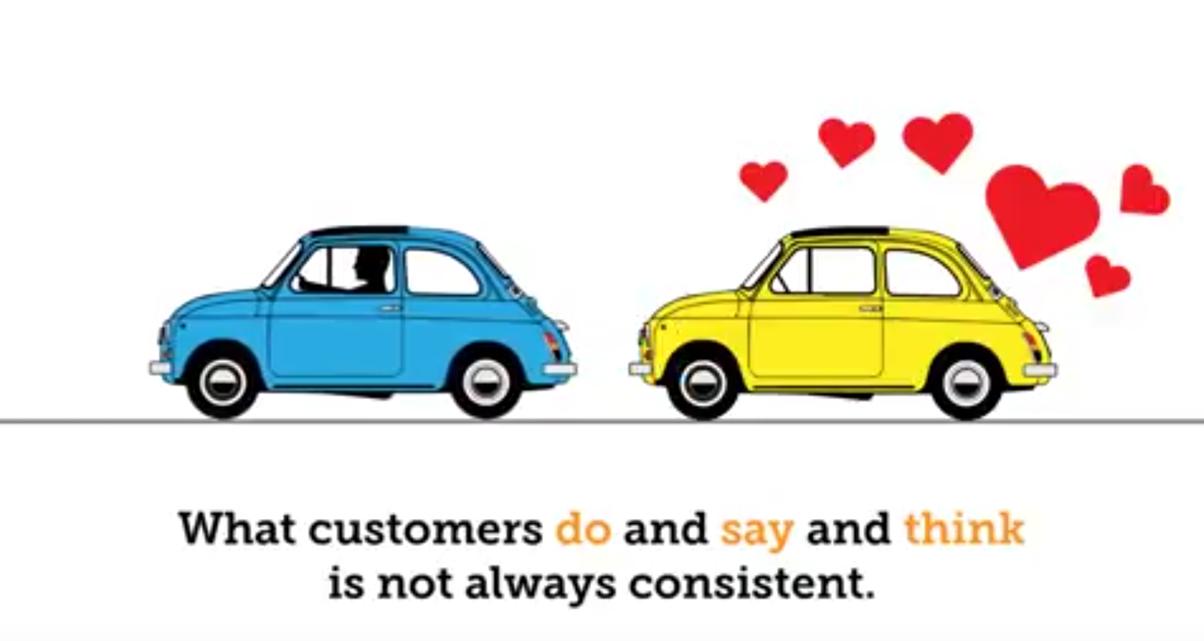
Market Research Quick Tip
A quick tip on market research.
With all research techniques we should remember that what customers do and say and think is not always consistent. I may LIKE the yellow car. It might be my FAVOURITE colour, but I might BUY the blue car – it stays looking clean, it’s easier to sell, it’s less a risky choice. So remember to ask the same question from many angles and look for consistency:
What is your favourite colour?
Which colour would you choose?
Which will be most popular?
Which colour would your partner choose?
Which colour would you buy?
read more
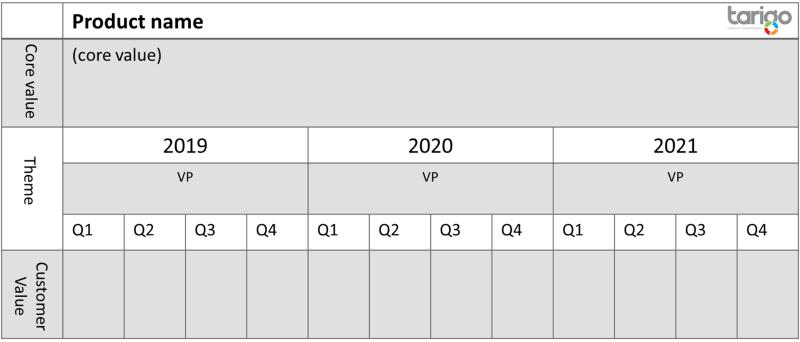
How to turn vision into action
Turning vision into action.
Building a vision is great.
But Product managers need to turn that vision into action – work out how to deliver customer value in incremental as we work towards that vision. We use this vision template to help:
1. Describe the core value you plan to offer (your vision)
2. Work out what the annual goal needs to be that help move towards that vision
3. Describe the incremental customer value you deliver each quarter that move towards your annual goal
read more
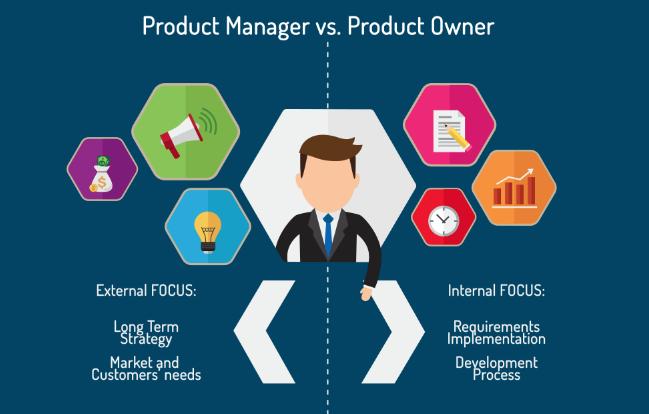
Product Manager vs Product Owner
How do you structure Product Owners and Product Managers in a team?
It’s a dilemma for many – we often work with teams where there really is not role clarity and often one person is trying to do both jobs. Typically the urgency of Product Owner duties overwhelms the importance of Product Management duties with the net result of very little commercial and strategic thinking taking place – the individual becomes technical, tactical and faces in to the organisation.
Short term this isn’t a problem, but look out over a longer horizon and the impact can be huge; limited vision, little market connection, and incremental product enhancement that exposes the business to risks from disruptive technology. Product Managers need time to be strategic, commercial, outbound and market-connected.
read more
Check out the Archive